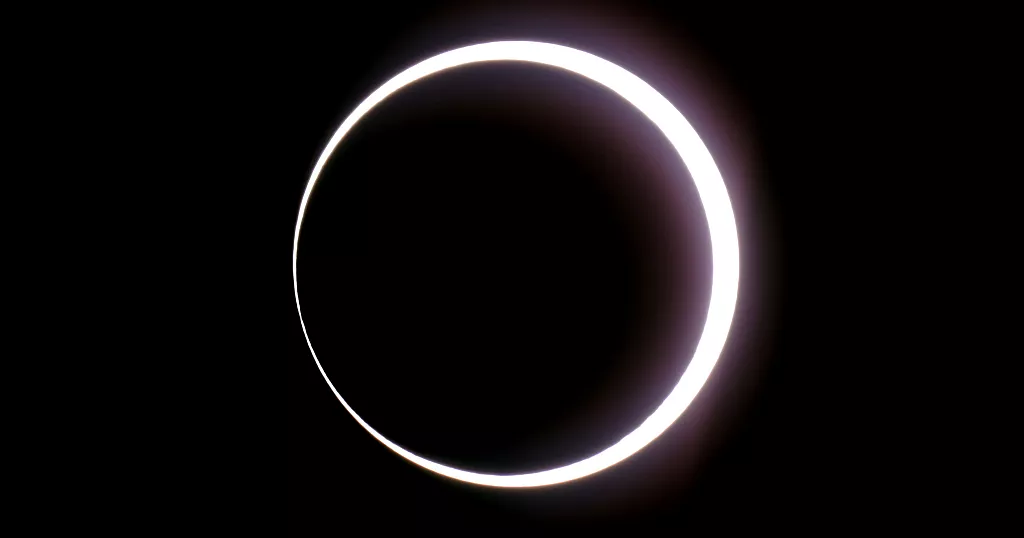West Africa to see two solar eclipses in 2025
3 min read

In an exciting astronomical event, West Africa will witness two solar eclipses in 2025, adding to the allure of this celestial phenomenon. The upcoming events are part of a series of eclipses that will capture the attention of skywatchers across the globe.
On October 2, 2024, a spectacular annular solar eclipse, commonly referred to as a “ring of fire,” will be visible over parts of South America, particularly Easter Island and the southern tips of Argentina and Chile. During an annular eclipse, the moon partially covers the sun, leaving a ring-like appearance because it is farther away from Earth in its orbit.
Dr. Carolyn Sumners, vice president of astronomy at the Houston Museum of Natural Science, explains that during this event, “The moon is just not quite big enough to cover the sun.” As a result, observers in the right locations will see a bright ring surrounding the dark silhouette of the moon.
Most of this eclipse will occur over the Pacific Ocean, making it difficult for many to view. However, Easter Island, known for its iconic Moai statues, is an exceptional viewing spot. “95% of the time this eclipse will be over water, so you have to get your boat in the right place,” Dr. Sumners notes, highlighting the uniqueness of this particular event.
For those in regions like Brazil, Paraguay, and Uruguay, a partial solar eclipse will also be visible, transforming the sun into a crescent shape. The full annular eclipse will begin around noon on Easter Island and conclude by 2:50 PM local time. At its peak, the moon will move across the sun for about six minutes, creating a stunning visual experience.
Witnessing an eclipse is not just about the spectacle; it’s about the shared experience. Dr. Sumners encourages families to make memories during these events. “Take family with you, take something special to happen,” she advises, noting that eclipses can serve as significant markers in our lives.
Safety is paramount during any solar eclipse. Looking directly at the sun can cause irreversible eye damage, even when the sun is partially covered. Special solar eclipse glasses are essential for safe viewing. These glasses block out harmful ultraviolet light and nearly all visible light. Regular sunglasses or binoculars are not sufficient.
Safe eclipse glasses should conform to ISO 12312-2 standards. Dr. Sumners emphasizes, “You have to wear the glasses, except when the moon completely covers the photosphere of the sun.” Since an annular eclipse does not achieve totality, viewers must wear protective glasses throughout the entire event.
For those unable to secure solar eclipse glasses, Dr. Sumners suggests a simple DIY alternative: a pinhole projector. “You can make one using a tall cereal box,” she explains. By letting light in through a pinhole, viewers can project an image of the sun onto the inside of the box.
After the annular eclipse on October 2, 2024, the next series of eclipses will include two partial solar eclipses in 2025, which will be visible in parts of North America, Europe, West Africa, and Antarctica. Additionally, two total lunar eclipses will occur, painting the moon red on March 13 and later that year.
Looking ahead, the next total solar eclipse won’t occur until 2026, with its path crossing the northern fringes of Greenland, Iceland, and Spain.
As excitement builds for these upcoming celestial events, enthusiasts and families alike are encouraged to prepare for a memorable experience. Whether observing from a unique location like Easter Island or watching from home with creative alternatives, the magic of solar eclipses offers a rare opportunity to connect with the cosmos and share unforgettable moments.